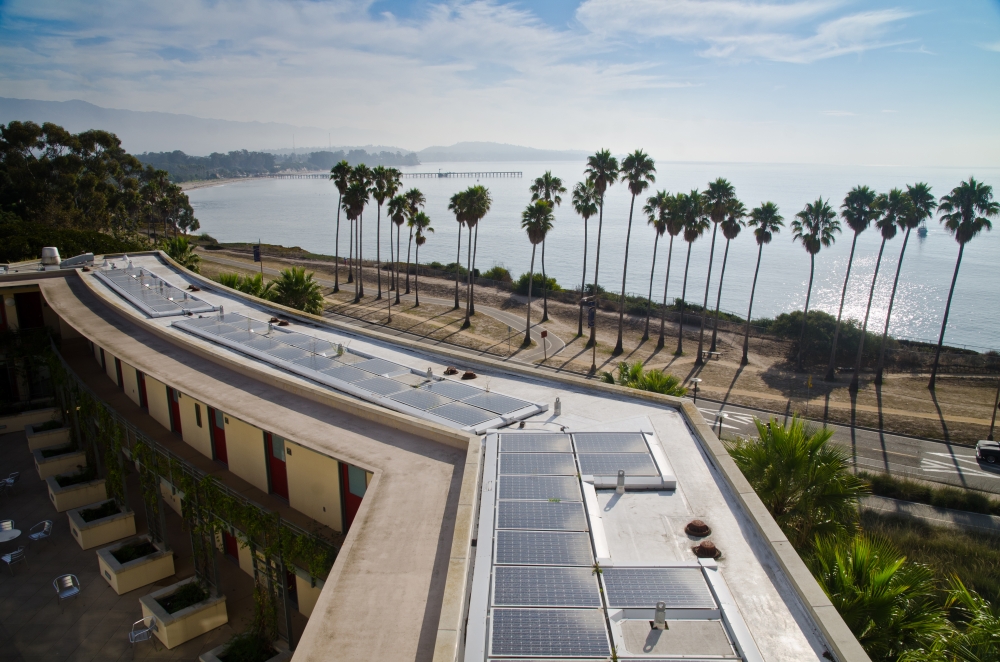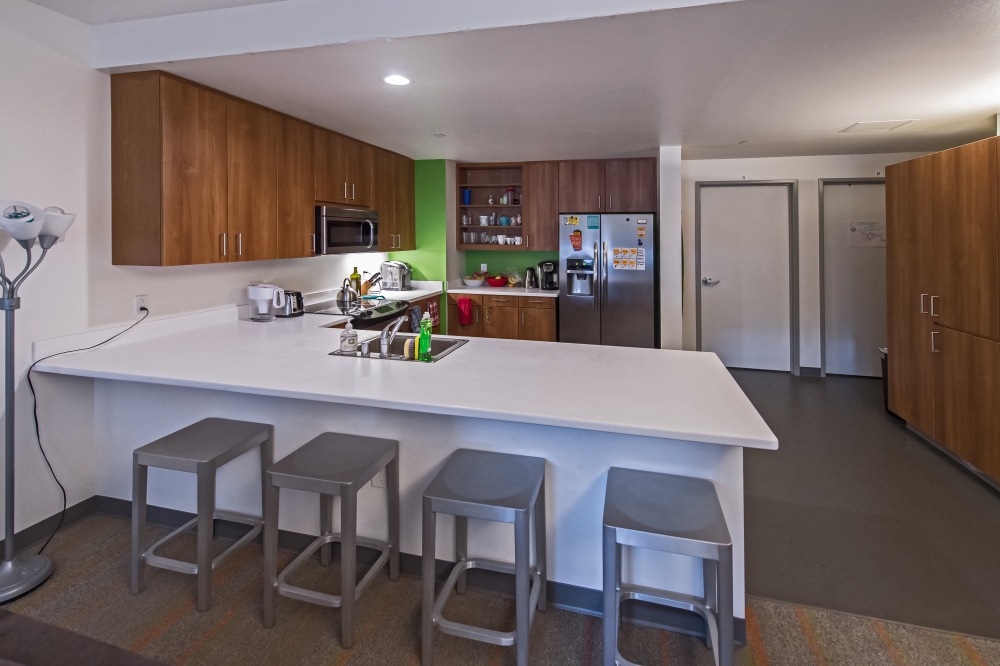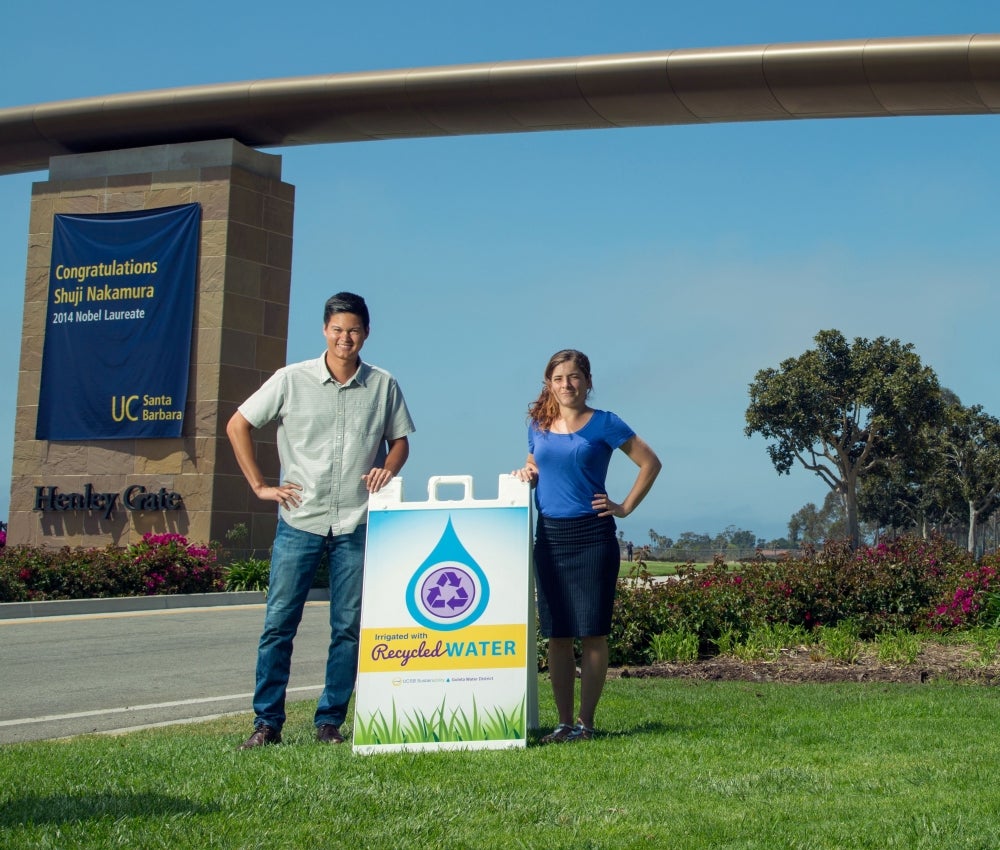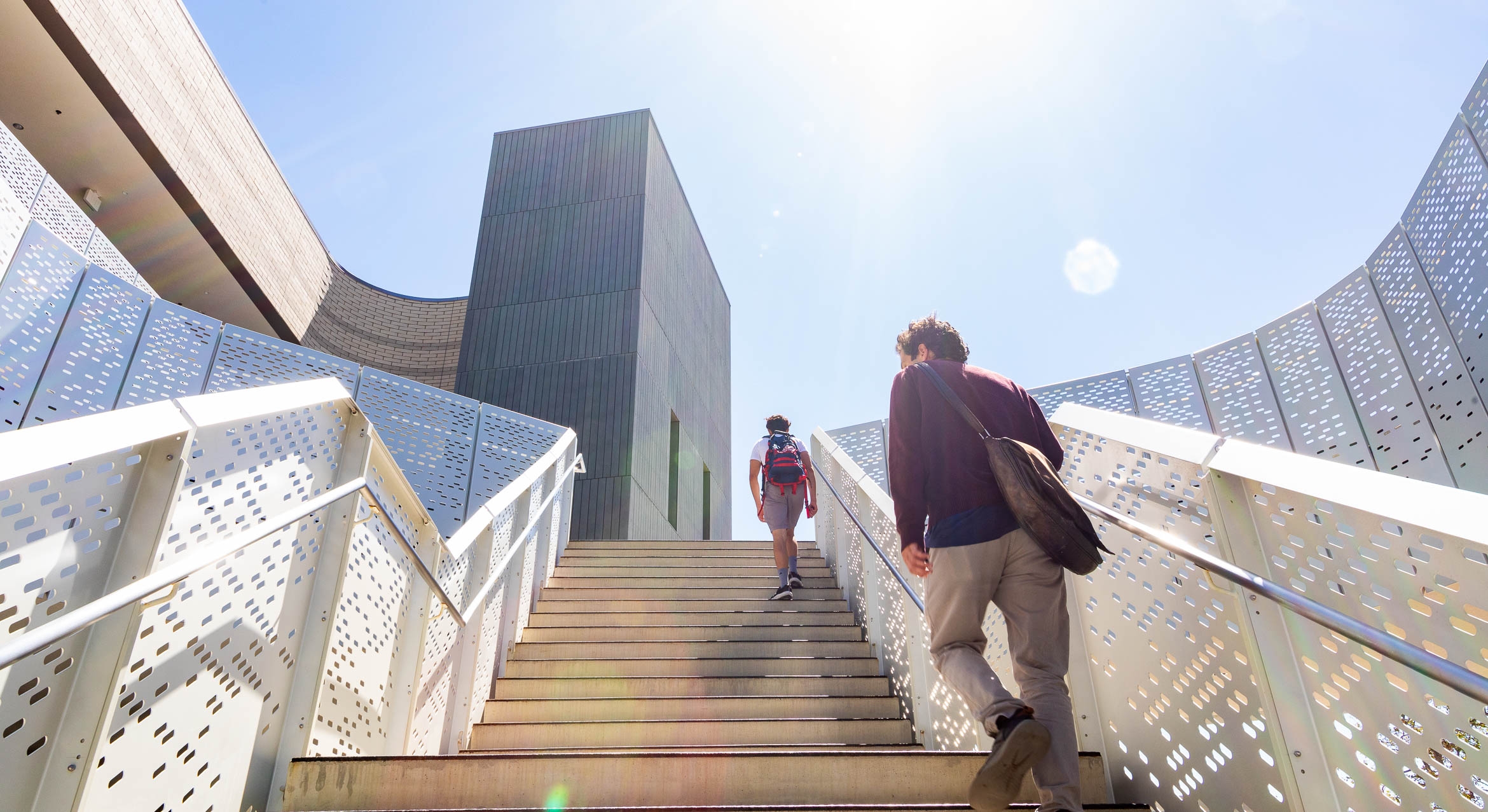Green Power
When it comes to sustainability, UC Santa Barbara’s efforts are coming up green, and getting some important attention — again. International rankings, a couple LEED Platinum certifications and recognitions for leadership in sustainability are among latest accolades the university long known for such things has garnered.
Among the organizations most recently granting green honors to UCSB are the Princeton Review, the Association for the Advancement of Sustainability in Higher Education, the U.S. Green Building Council and the National Recycling Coalition.
“This latest round of certifications, awards and outstanding rankings is a testament to the continued efforts of UCSB’s staff, students and faculty in making our campus a leader in sustainability writ large,” said Bruce Tiffney, earth sciences professor and co-chair of UCSB’s Campus Sustainability Committee. “Calling upon our in-house expertise, as well as UCSB’s ‘can do’ spirit, we have used available technology in imaginative ways to reduce our energy and material footprint, while pioneering new solutions and developed a water plan that has become a model for UC, among other accomplishments. Much remains to be done, and UC Santa Barbara will certainly remain a leader in the UC and the nation, given the energy and commitment of our campus community.”
Princeton Review’s 2017 Top 50 Green Schools ranks UCSB No. 22 — out of 375 qualifying colleges worldwide — making it one of the top choices for students who want to live and study on a sustainability-focused campus. Of the 10,000+ teens and parents surveyed by the publication, 64 percent indicated that “having information about a school’s commitment to the environment would influence their decision to apply to or attend the college.”
Meanwhile, the Association for the Advancement of Sustainability in Higher Education (AASHE) highlighted UCSB in two sections of its 2017 Sustainable Campus Index, recognizing the campus for its sustainability efforts around both water and wellbeing and work. AASHE acknowledged UCSB’s 54 percent reduction in potable water use from its three-year baseline, and its push to increase minimum wages for employees working at least 20 hours per week to $15/hour.
In addition, the campus’s performance has again earned AASHE’s Sustainability Tracking, Assessment & Rating System (STARS) Gold rating. A transparent, self-reporting framework for colleges and universities in the U.S. and Canada, STARS is the leading tool for measuring higher education sustainability performance. With nearly 800 participating institutions, it is the most thoroughly vetted and extensively tested system of its kind.
LEEDers in green building
UCSB’s Bren School of Environmental Science & Management has again raised the bar for green building on university campuses, obtaining its third platinum-level Leadership in Energy and Environmental Design certification for Existing Buildings — Operations and Maintenance (LEED EB O&M) for Bren Hall.
“This third platinum certification was in the new LEED Version 4 standard, which was much tougher than the previous versions,” said Sage Davis, Bren Hall’s building engineer. “Bren well surpassed the requirement of 80 points by achieving 93 points.”
Reaching for LEED certification also provided a hands-on learning experience for students attending Bren School’s year-long Environmental Studies LEED Lab course, now in its fourth year. Their project, according to Davis, involved the collaboration of Bren Hall occupants, the LEED Lab course students and instructor, and UCSB’s Department of Facilities Management.
Bren Hall, with its energy efficient design, was recognized as the nation’s “greenest laboratory building” shortly after its construction in 2002, and was the first laboratory building in the country to receive LEED Platinum certification. It stayed ahead of the green curve in 2009 by being the first in the country to take a second LEED Platinum certification, this time for existing buildings. The 2017 LEED Platinum certification makes Bren Hall the first building in the country to achieve the highest level of LEED certification three times.
UCSB’s San Joaquin Apartments is the newest campus facility to attain LEED Platinum certification. The building’s complexity, size and diversity of design made its LEED certification for homes a challenge, but the various buildings in its footprint — from residences to community spaces — scored the prestigious platinum rating, with the exception of its Portola Dining Commons, which is expected to receive its Platinum certification in the near future
“The San Joaquin Villages project achieved this highest level of LEED certification by employing several sustainable design measures including solar thermal heating, low-flow plumbing and natural ventilation with dual-pane windows,” said Brian Graham, director of residential operations in the Department of Housing, Dining & Auxiliary Enterprises. The design focus on water efficiency and recycling both in the buildings and in the exterior landscaping is expected to save up to 650,000 gallons of potable water per year, according to him. Water- and energy saving measures taken together, the project surpassed the energy baseline by 73 percent and reduced water use by 46 percent from baseline measurements.
In addition to the earth-friendly construction, the San Joaquin complex is well-appointed with on-site amenities and its location encourages more biking, walking and public transit use, all of which would result in fewer carbon emissions from cars on the road. The complex is also gender inclusive, accommodating diverse gender identities and expressions.
Treading More Lightly on the Earth
UCSB’s Recycling & Water Efficiency Manager Matthew O’Carroll’s dedication to keeping the campus green has not gone unnoticed. The National Recycling Coalition (NRC) recently recognized him with an Honorable Mention for its Bill Heenan Emerging Leader Award.
O’Carroll manages UCSB’s refuse, recycling and waste management program, oversees water resources and water efficiency initiatives, and heads up the campus’s integrated pest management program. UCSB’s heralded reduction in potable water use, and its increased rate of diverting waste from the local landfill, are due in large part to his work, which has also received “best practice” recognitions from the California Higher Education Sustainability Conference.
Said NRC’s Awards Committee Chair Lisa Skumatz, “Matthew has already accomplished a lot for someone his age. I am impressed by his contributions to statewide projects and the constant praise he receives from colleagues.”
The Earth-friendliness doesn’t stop at UCSB. In fact, the entire 10-campus UC system has been lauded by the U.S. Environmental Protection Agency (EPA) for its dedication to shrinking its carbon footprint and boosting its use of renewable energy. UC is one of only eight organizations nationwide to receive EPA’s annual Excellence in Green Power Use Award, which recognizes the nation’s leading green power users for their commitment and contribution to helping advance the development of the nation’s voluntary green power market.
To that end, UCSB has continuously increased its solar energy capacity. This measure is in keeping with the UC system’s Carbon Neutrality Initiative, which commits UC to emitting net zero greenhouse gases from its buildings and vehicle fleet by 2025 — something no other major university system has done.
“This year, UCSB increased its on-campus solar electricity generating capacity by an order of magnitude from 500 kilowatts to over five megawatts now online,” said Campus Energy Manager Jordan Sager. UCSB’s on-site solar systems now generate more than one-third of the campus’s peak electrical demand.







